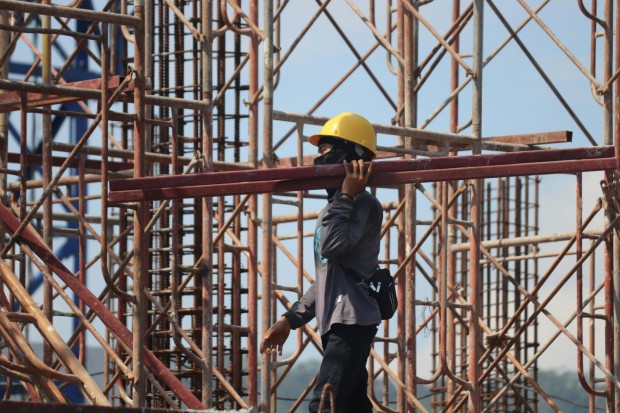Though they can occur at anytime and everwhere, heat injuries are more frequent in the summer. Nevertheless, construction workers are most susceptible to these heat related injuries as they spend so much time outside.
Find out more about these crucial head injury prevention guidelines from the Occupational Safety and Health Administration (OSHA).

(Photo : Pexels/Mufid Majnun)
1. Provide Proper Hydration
Generally, it is recommended that laborers consume 8 ounces of water every 15-20 minutes. Therefore, you should make sure your building workers have plenty of cool water to drink for the whole day. The building site should reportedly have this water readily available at all times and in a convenient location. As mentioned, electrolyte-containing sports drinks should be blended with water in cases where there is sustained perspiration that lasts for several hours. Steer clear of supplying liquids that include caffeine because these beverages have the potential to induce dehydration.
2. Give Workers Wear Light-Colored, Breathable Clothing
Most construction workers wear personal protection equipment and clothing that traps heat near the skin, therefore limiting the body's ability to cool itself through perspiration. Construction workers should dress in breathable textiles, such cotton, rather than synthetic materials that are not breathable. Moreover, it is better to choose lighter colors than darker ones because dark clothes retain more heat.
3. Provide Shade and Cooling for Breaks
Workers should be encouraged to take more frequent breaks after temperatures reach 80 degrees Fahrenheit or above. There ought to be a sufficiently covered break area available so that workers may take a break from the intense heat. Furthermore, these shaded break rooms should have a cooling system installed to help employees lower the temperature of their inner bodies. As one of the most efficient cooling solutions for construction sites, outdoor evaporative coolers are an excellent choice.
4. Educate Workers How to Avoid Heat Illness
Workers should get instruction on how to avoid and deal with excessively high temperatures in addition to being aware of the warning signs and symptoms of heat-related illnesses.
Also Read: Cementitious Waterproofing: 7 Benefits Every Homeowner Must Know
5. Monitor Weather Conditions and Heat Stress
Check the most recent heat warnings and weather forecasts. Therefore, to anticipate and lower the chance of possible risks, use tools like the Wet Bulb Globe Temperature WBGT index to assess the potential of heat stress and modify your work habits in line with the findings.
6. Use Engineering Controls
Installation of ventilation systems, use of reflective materials to lessen heat absorption, and provision of personal cooling equipment are a few examples of technological ways to enhance heat exposure.
7. Acclimatization
Workers should be exposed to hot conditions gradually so that their bodies can eventually become used to the heat. Both new hires and returning employees should appropriately adapt to working in hot temperatures.
8. Establish an Emergency Response Team
Clarified guidelines for responding to heat-related emergencies should be established. These procedures ought to cover giving first aid, calling for help, and, if necessary, taking sick people to a hospital.
Related Article: Extreme Heat May Threaten US Economy Due to Major Impacts on Construction Productivity and Investment







